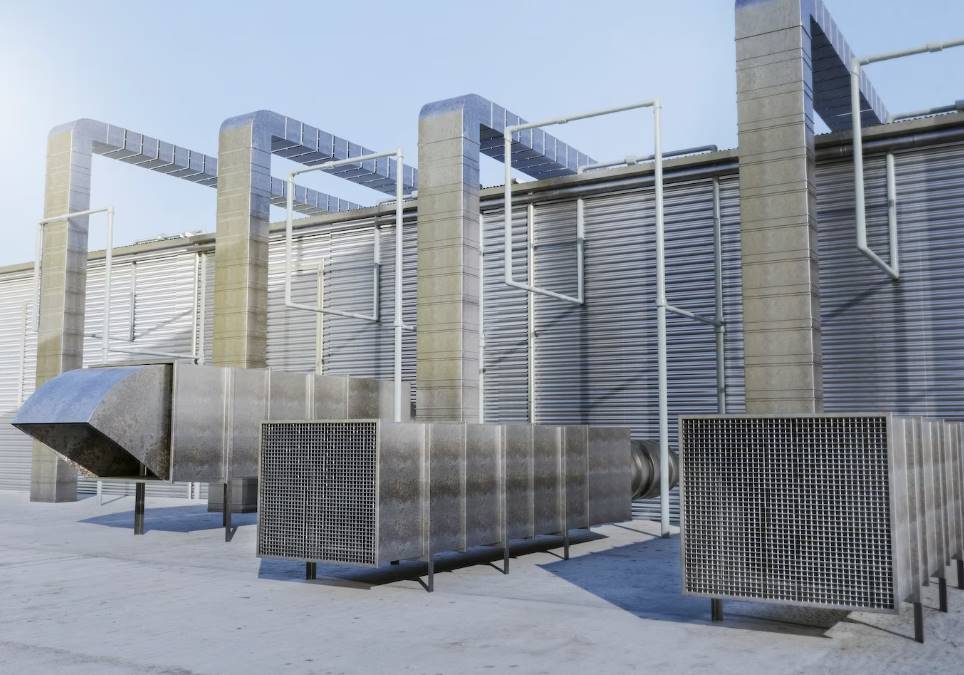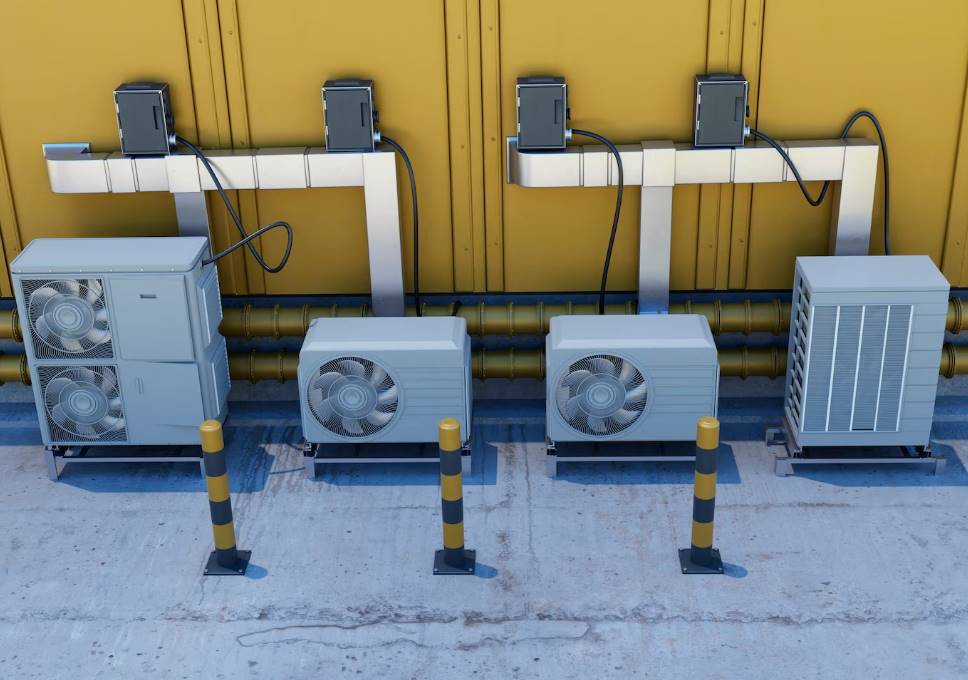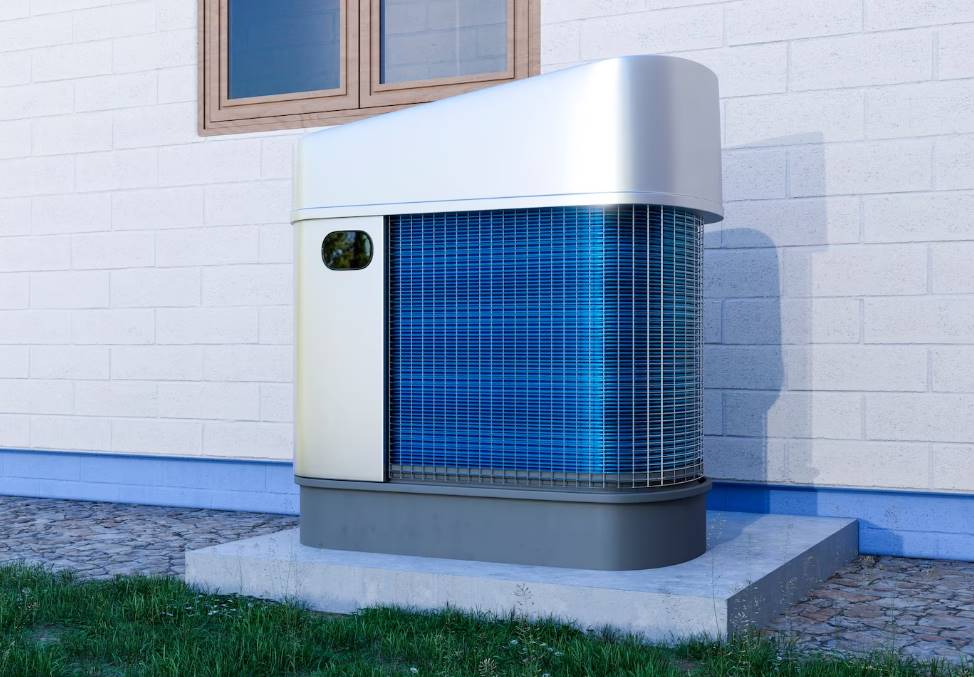Green building design has greatly benefited from advancements in HVAC. People used to put in HVAC systems without considering the effects they could have on the natural world.
However, experts now know that a green HVAC system may make a house more sustainable and save on utility bills. The effects of this system on sustainable architecture are discussed in detail.
HVAC System Fundamentals
Let's start with the fundamentals of HVAC systems before we get into sustainability. The HVAC systems in our structures routinely need to be more appreciated. They ensure our comfort year-round by regulating the humidity, temperature, and air quality. Air handlers, ducts, and heat pumps all work together to provide the ideal indoor climate in these systems.
The Environmental Effects Of Hvac Systems.
It's likely already common knowledge that HVAC units are notorious energy hogs. They are a major user of electricity in structures. In-building HVAC systems are responsible for 38 per cent of all building energy use, according to studies.
Furthermore, these systems are responsible for 39% of all global glasshouse gas emissions from the building sector.
Also, global warming is no longer an issue of the distant future. Extreme weather and rising sea levels are just two examples of how it's already affecting our daily lives. These pose a serious risk to our health and the health of our communities.
Most HVAC systems are not just inefficient but also extremely energy-intensive. Heating and cooling systems, for instance, waste almost half of the electricity they consume by not producing any usable heat or cold. Most of it is wasted, but you can significantly reduce energy use by switching to more efficient ones.
In What Ways Might Hvacs Lessen Their Impact On The Environment?
Efficient HVAC systems consume less energy because they employ more energy-saving technologies and design philosophies. For example:
Installing high-efficiency components like air handlers and condensing furnaces to optimise the system's performance. Fans and pumps with variable-speed motors can save energy without compromising convenience.
Heat recovery ventilators and chilled beam systems replace mechanical cooling and heating systems. Using these systems can reduce initial investment costs without sacrificing the effectiveness of a building's net-zero water system.
By installing an Energy Management System (EMS), you can save money on utility bills by turning on and off the lights and other electrical appliances only when needed. Next, it monitors performance and adjusts to lower running costs and carbon emissions. Compliance with regulations linked to green buildings can be verified with the help of real-time data provided by an EMS.
What Role Does Hvac Play In Eco-Friendly Structures?
Because of its impact on the building's energy efficiency, HVAC systems play a crucial role in green building design. An eco-friendly HVAC system reduces a building's carbon footprint.
There are three things to keep in mind while planning an environmentally friendly HVAC system:
- The chemical makeup of the air conditioner's refrigerant.
- How much fresh air does your eco-friendly structure need?
- How will you maintain a comfortable working environment at the construction site?
Leave a magnetic calendar in the building after the installation is complete so the receiver can contact you when maintenance is needed.
Take Advantage of Eco-Friendly Construction Techniques
Green heating and cooling systems, as well as environmentally friendly building supplies, are in high demand. But sustainable architecture isn't just about saving the planet; it's also about making people happy in their homes and workplaces. Including eco-friendly technologies in your project has financial and environmental upsides.
Design is the first step towards efficiency. HVAC system selection is a complex process that requires the expertise of architects and engineers. They must consider the building's orientation, insulation, and environment to ensure the HVAC system works properly.
You know that reducing your carbon footprint by installing a green HVAC system in your home will result in cost savings over time. Green building design has many monetary benefits, but installing an HVAC system also helps the environment and people's health.
The requirements of sustainable architecture should be taken into account while developing an HVAC system. Generally speaking, you should keep in mind the following:
Stick to the basics: Construct an effective system that performs multiple tasks at once, such as heating, cooling, and dehumidification. This simplifies the ducting and makes it more manageable in the long run. In addition, it lessens power consumption because fewer components will have to operate in parallel on different circuits.
Save resources: One should strive to "close" all open loops. In that manner, nothing, not even the heat produced by electronics, is lost or out of whack. Keeping trash to a minimum will ensure continuity of operation. Furthermore, no additional maintenance will be required because efficient drainage prevents dust accumulation and corrosion.
The Importance of Sustainability
Sustainable practices are essential, not only fashionable. The environmental threats facing our world mean that sustainable practices must be implemented in all areas of society, including buildings. Using sustainable building practices helps lessen our environmental impact, saves money, and protects the health of future generations.
Sustainable design in buildings is no longer a fad but an essential component of cutting-edge construction. Green architecture is becoming more of a priority for architects and engineers as environmental issues take the front stage. This strategy was developed to lessen environmental harm, reduce energy use, and make buildings safer and healthier for residents.
Green construction practices should prioritise HVAC systems. Let's take a closer look at why these systems are so important for environmentally responsible building design:
Energy Efficiency Is Improved With Centralised HVAC Systems.
Energy efficiency is crucial to the construction of green buildings. Building HVAC systems are energy-intensive.
Low-energy heating and cooling (HVAC) systems can significantly cut costs and carbon emissions.
Centralised HVAC systems are more cost-effective than standalone ones. They can be controlled centrally, resulting in less energy waste. In addition, these systems may be monitored and adjusted remotely, making them useful in any climate or time of day.
HVAC technicians can customise these systems to fit individual requirements. Think of a school or business where classes begin at various times throughout the day. It could make sense for these buildings to turn off their HVAC systems when they are empty.
When school starts again, this will help keep the heat down while still being comfortable.
Concerns About Indoor Air Quality
Sustainability is more than just the planet; it's also about us. Clean air and filtered-out contaminants are two ways HVAC systems help with indoor air quality. The health and productivity of building inhabitants are directly tied to the quality of the air they breathe.
Considerations for energy efficiency, moisture control, indoor air quality, and occupant comfort all play a part in ventilation in green building design.
What does ventilation contribute to each of these?
Air Quality
Allergies and asthma are only two conditions worsened by subpar indoor air quality. Maintaining adequate ventilation in the home can help cut down on airborne contaminants and is good for the health of everyone living there.
Moisture Control
Mould growth, facilitated by excess humidity, is a big problem in buildings because it can cause the spread of disease through the air we breathe.
Energy Efficiency
Energy efficiency greatly benefits from proper ventilation. Bringing in clean air and drying it out helps you save money on both heating and cooling.
Comfort
You can avoid exposure to harmful contaminants and illnesses by circulating the air.
Increased Energy Savings
HVAC takes a lot of a building's energy budget. A building's carbon footprint and operating costs for air conditioning and heating can dramatically decrease if designers implement energy-efficient HVAC systems.
Maximum Thermal Relaxation
To keep indoor temperatures from fluctuating too much, HVAC systems are needed. Architects can reduce energy use and provide individual comfort by implementing smart thermostats and zoning strategies. The result is happier and more productive tenants.
Reduced Effect On The Environment
Green HVAC systems use environmentally friendly refrigerants and innovative technologies like solar-assisted cooling, heat recovery, and geothermal systems to provide heating and cooling. These enhancements greatly cut down on GHG emissions, which in turn aids in the fight against climate change.
Longevity Maintenance
Maintenance is essential for the continued viability and effectiveness of HVAC systems. The lifespan of the system can be prolonged, and energy waste minimised through preventative maintenance and repairs.
Green Building HVAC Developments
Green building HVAC trends focus on energy savings. More and more green buildings are installing renewable energy HVAC systems that use solar or wind power. HVAC energy expenditures can be reduced by using renewable energy. Green construction companies should be aware of these recent HVAC developments:
What Heating and Air Conditioning Technicians Should Use
Green building experts often recommend the following pieces of HVAC gear due to their low cost and ease of installation. For example:
Solar Energy Systems For Heating And Cooling
Through the photoelectric effect, solar energy will be transformed from the sun into usable heat or electricity by the panel.
Using Geothermal Energy, Heat Pumps
These circulate water at a high or low temperature by taking advantage of the temperature differential between the air and the ground. They then use their bodies to either heat or cool the structure.
Air Source Heat Pumps
The technology operates by taking advantage of the colder indoor air temperature. That's how an HVAC appliance called an air handler may transfer thermal energy from one location to another using a refrigerant. This site contains information about heat pumps.
HVAC systems have become increasingly important in green building as the world's attention turns to more sustainable practices. Air quality, Energy efficiency, and occupant comfort are three factors that architects and building owners may focus on to construct greener buildings.
The key to successfully installing HVAC systems that lower environmental impact while offering optimal interior conditions is collaborating with experts, embracing innovation, and considering life-cycle costs. We can create a better world by constructing eco-friendly structures.
For green buildings to thrive, HVAC systems must be environmentally friendly. These systems reduce energy use, boost IAQ, and make life more bearable for building occupants by employing energy-efficient technologies.
Sustainable HVAC systems feature energy efficiency, which results in massive savings and less pollution. HVAC systems' energy efficiency can be improved further by incorporating renewable energy sources.
The health and productivity of building occupants can benefit from enhanced indoor air quality achieved through adequate ventilation and filtration. Sustainable HVAC systems that use noise reduction technology produce more peaceful and pleasant interiors.
Conclusion
Improvements in heating, ventilation, and air-conditioning (HVAC) systems are well-known for their negative effect on the environment, thus their incorporation into green building design has been a boon. All-year cosiness is at one's fingertips because to HVAC systems' ability to control humidity, temperature, and air quality. However, they are renowned energy hogs that account for 39% of global glasshouse gas emissions and 38% of all building energy use. High-efficiency components, variable-speed motors, heat recovery ventilators, and chilled beam systems are just some of the ways in which upgrading to more efficient HVAC systems can minimise energy consumption.
By tracking performance and making adjustments to reduce operating costs and carbon emissions, Energy Management Systems (EMS) can also aid in saving money on electricity bills. A building's carbon footprint can be greatly diminished with the help of an HVAC system. Consider the chemical composition of the refrigerant, the amount of fresh air needed, and the importance of providing a comfortable working environment when designing an HVAC system that is gentle on the environment.
The orientation, insulation, and environment of a building must all be taken into account throughout the design process of a green building. Green HVAC systems have many advantages, including cost savings, less environmental impact, and improved human health. Focus on the fundamentals, closed loops, and minimal waste in the development of an efficient HVAC system.
Because of the growing awareness of the need of environmental responsibility, sustainable design is increasingly being prioritised in the built environment. In order to maximise energy savings, decrease expenses, and cut carbon emissions, HVAC systems should be given top priority in green building practises. In every season or time of day, a centralised HVAC system is a wise investment due to its low cost and remote controllability.
The health and productivity of a building's occupants are intimately related to the indoor air quality. Good ventilation helps with air quality, humidity regulation, energy savings, comfort, thermal relaxation, environmental friendliness, durability, and upkeep.
HVAC systems that run on renewable energy sources like solar or wind power are becoming more common in eco-friendly structures. These units employ cutting-edge refrigeration technology and climate-friendly refrigerants to reduce global warming gas emissions. A properly maintained HVAC system will last longer and use less energy.
Solar heating and cooling systems, geothermal heat pumps, and air source heat pumps are all highly recommended by green building specialists. These systems are inexpensive and simple to implement, but their effectiveness relies on teamwork, innovation, and taking life-cycle costs into account.
Green HVAC systems are more cost-effective in the long run and provide healthier air for building occupants. Better HVAC systems that make use of renewable energy sources can make buildings more eco-friendly and liveable.
Content Summary
- Improvements in HVAC are a boon to sustainable architecture.
- Sustainable and cost-effective, green HVAC systems are a boon to the environment.
- The HVAC industry has a major impact on the environment.
- Comfortable indoor climate is maintained by heating, ventilation, and air conditioning (HVAC) systems.
- The energy used by HVAC systems in buildings is significant.
- The HVAC system uses 38% of the energy in a building.
- In the construction industry, HVAC systems are to blame for 39% of all glasshouse gas emissions.
- The effects of global warming on human health and society are already being felt.
- Wasted energy from inefficient heating, ventilation, and air conditioning systems is costly.
- Energy use can be lowered by using an HVAC system that is efficient.
- Energy efficiency is increased by using high-efficiency parts and variable-speed motors.
- Utility costs can be reduced with the aid of an EMS.
- In terms of environmental friendliness, HVAC systems are essential.
- The carbon footprint of a building can be minimised with environmentally efficient HVAC.
- Air conditioning, ventilation, and worker comfort are all things to think about on a building site.
- The goal of sustainable design is to minimise harm to the natural world.
- Both the building's orientation and insulation have a role in determining the best HVAC system to install.
- Green HVAC systems are more efficient, and they save money and help the environment.
- Maintain a focus on fundamentals and plug any efficiency leaks.
- Protecting the planet's natural resources requires adopting sustainable practises.
- Green design lessens environmental impact while boosting public security.
- Green building design relies heavily on efficient energy use.
- It is more economical to have a centralised HVAC system.
- Multiple structures can benefit from remote monitoring and personalisation.
- There is a correlation between poor indoor air quality and decreased health and productivity.
- Allergies and mould growth can be mitigated by increasing airflow.
- A well-ventilated building uses less energy.
- Indoor climate is reliably controlled by HVAC systems.
- Eco-friendly components are used in green HVAC systems.
- The effectiveness and useful life of your HVAC system depends on regular maintenance.
- Green HVAC practises are increasingly concerned with reducing carbon emissions.
- Ecology-friendly power Climate control is becoming increasingly common.
- Solar panels and heat pumps that use Earth's natural temperature gradient are suggested.
- Heat pumps that get their heat from the surrounding air are highly effective.
- Green buildings place a premium on indoor air quality, energy efficiency, and the comfort of their occupants.
- The secret to a successful HVAC installation is working with professionals and thinking outside the box.
- Save money and make your home more comfortable with a sustainable HVAC system.
- Building occupants gain from improved indoor air quality.
- Eco-friendly HVAC units have noise-cancellation features.
Frequently Asked Questions About HVAC Systems
HVAC systems play a crucial role in sustainable building design by reducing energy consumption, lowering carbon footprints, and enhancing indoor air quality, contributing to environmentally responsible and comfortable living and working spaces.
HVAC systems can be made more environmentally friendly by incorporating energy-efficient technologies, using renewable energy sources like solar or geothermal power, and implementing proper ventilation and filtration to improve indoor air quality while minimising energy consumption.
HVAC systems significantly affect a building's energy efficiency. Energy-efficient HVAC systems can lead to substantial cost savings and reduced carbon emissions, making them a key component of green building design.
When selecting HVAC systems for sustainable architecture, factors such as refrigerants, the need for fresh air exchange, and the comfort of building occupants are essential. Architects and engineers must also consider building orientation and insulation for optimal system performance.
Proper HVAC maintenance is crucial for building sustainability as it extends the system's lifespan, minimises energy waste, and ensures efficient operation. Regular maintenance reduces the need for replacements and repairs, lowering overall environmental impact.



